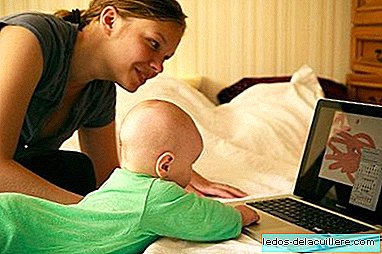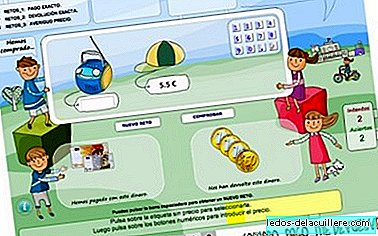
It is very important to know that the language and the environment they are closely linked to each other, since the first is developed through a series of exchanges with the second, without having a premeditated form for learning.
For example, the child learns to speak with the closest adults, who, in turn, teach the child to speak; and all this is carried out without following a preset way to speak to the child.
The main characteristic of child-adult exchanges during the first years is the interaction. Let's explain a little how it can be done.
Frequently, the initiative of the interaction between an adult and a child is born from it, which attracts the attention of the adult through a gesture, a shout, some sounds or even words.
This first production produces a verbal response from the adult that always stands in the assumption that the child is communicating with him (including babies of a few months).
In this case, the adult returns his message to the child with three types of corrections:
- Phonetic and phonological correction: the adult pronounces correctly the words emitted by the child, translating his shouts and babbles (for example, if the child wants to play with a car he will say "oe"; the adult will answer him, while pointing or giving it, "car" )
- Semantic extension: the adult adds some words and concepts related to what the child has said (following the example of the car, the adult could add "car! bruummmmm!", while moving it near the child)
- Syntactic expansion: the adult responds using elements of the children's message in a somewhat more complex structure (let's continue with the car; this time, the adult will say "the car is red")
In this way, the child obtains for each initiative of his, a response that can serve as a model for future verbal broadcasts.
It must be taken into account that when the child intervenes, an adaptation of the adult language is caused, which is almost always done in the form of a corrective response, thus allowing him to confirm, inform or complete what the child initially wanted to say.
The child will learn, much more than the words we can repeat throughout the day, those that allow him to solve his problems and satisfy his needs, or that provide him with an element of play. That is: the child selects what he wants to learn.
The initiative can also be given by the adult. In this case, the intention will be to teach the child something, the child's behavior being mainly imitative rather than creative (the child no longer chooses what he wants to learn).
Although it may seem a lie, in real life there are many more situations in which the child has the initiative of interaction than those in which the adult is the one who initiates the oral communicative exchange.
It is important to keep in mind that the quality of communication relationships in an environment must be available, motivating and game-like, without forgetting the adaptability of adult language.
It is much more important know how to listen and answer properly To the child who make many attempts to teach him countless things.












